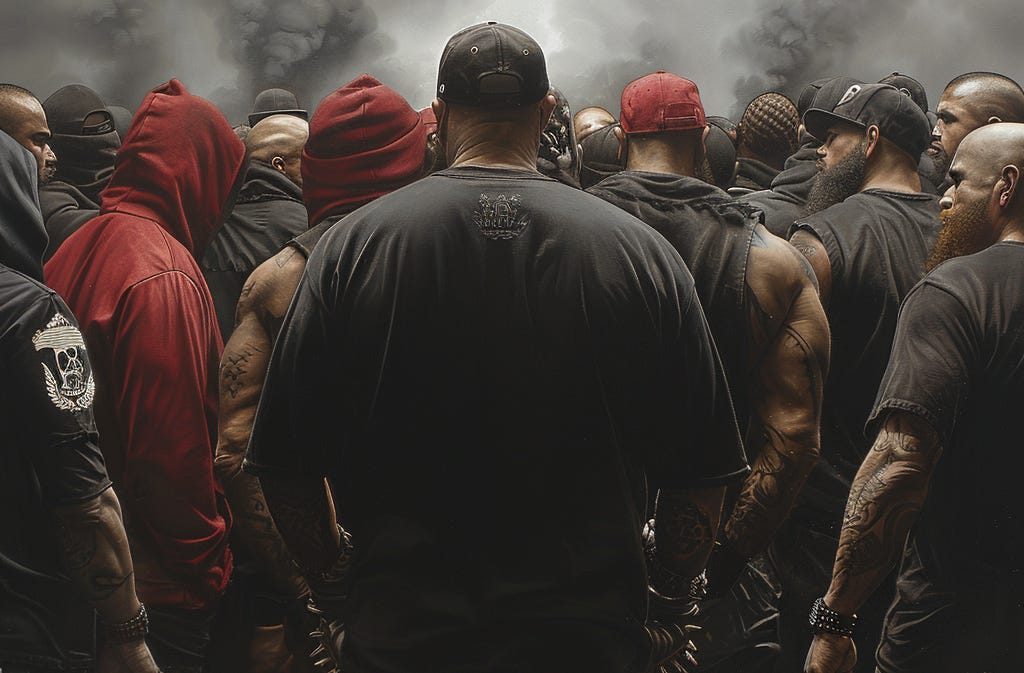Banning gang patches will not support a safer, happier Aotearoa New Zealand.
The coalition demonstrates the left don't have a monopoly on virtue signaling.
The recent decision by New Zealand's coalition government to ban gang patches in public spaces is a policy wrapped in the noblest of intentions but marred by a troubling lack of foresight.
It is a policy born out of a legitimate and urgent need to combat gang violence and criminal activities that have long plagued our communities. Yet in our earnest quest for safety and order we find ourselves with a policy that, while well-intentioned, is fundamentally flawed in its approach and potential efficacy.
Before we proceed, let’s also remember - behind the patch is a person. Each with a story, with potential, with trauma, with choices (however few). We should expect effective law and order, and accountability for criminal behaviour - but if we only treat the symptoms, we will never address the root causes of the issue.
The Illusion of Action
Firstly, let's consider the symbolic nature of this measure. Banning gang patches is a gesture that, on the surface, appears to confront the issue head-on. It's a policy that the government can point to as evidence of their action against the scourge of gang-related crime.
However, this is precisely where the problem lies - it is a policy more concerned with the appearance of action than with the substance of real change. The roots of gang membership and activity are complex and multifaceted, intertwined with socio-economic disenfranchisement, systemic failures, and a lack of viable positive enabling opportunities. Addressing these issues requires more than just legislative prohibition; it requires a deep and committed investment in the social fabric of our communities.
The Shadow of Unintended Consequences
The potential for unintended consequences looms large. By pushing gang insignia out of the public eye, we aren’t eradicating these groups, we risk driving them further underground. This could render gangs even more difficult for law enforcement to monitor and combat, effectively exacerbating the problem it seeks to solve. The policy in its narrow focus misses the forest for the trees, neglecting the adaptive nature of criminal organisations and their capacity to evolve in the face of legal obstacles.
A Precarious Balance: Civil Liberties at Stake
Perhaps most concerning, and ironic considering ACT’s positions on civil liberties and freedom of speech, is the encroachment this ban presents to them. The right to freedom of expression, however unpalatable it may be when exercised by gang members (or other groups one may have an issue with), is a cornerstone of our democracy. The question then arises: where do we draw the line? Today it may be gang patches, but tomorrow, what other forms of expression could fall foul of government decree? This slippery slope towards authoritarianism is paved with ostensibly well-meaning policies that, in their execution, chip away at the very liberties they purport to protect.
The Community Conundrum
The relationship between law enforcement and the communities they serve is delicate, and predicated in theory, on mutual trust and respect. This ban threatens to undermine that relationship, substituting engagement with antagonism and enforcement. In communities already wary of police presence, increased patrols and focus on gang paraphernalia will likely further entrench feelings of alienation and resentment. Such an adversarial stance does little to foster the community cooperation so essential for effective policing.
The Mirage of Effectiveness
The crux of the matter lies in the ban's fundamental effectiveness - or lack thereof. The challenges of enforcement, from identifying what precisely constitutes a gang patch to the legal battles likely to ensue, present a costly, resource hungry, avoidable logistical nightmare. This should be an anathema to the the coalition’s focus on efficiency and effectiveness.
Further, the absence of concrete evidence supporting the efficacy of such bans in reducing gang activity should give us pause. Are we then merely engaging in an exercise of futility, expending valuable and limited resources and energy on a measure with dubious outcomes? We understand the coalition needs to show action, but this isn’t an optimal strategy.
While the government's desire to address the issue of gang violence is understood, necessary and shared, the path it has chosen is fraught with pitfalls. A more nuanced approach, one that is hard on negative behaviours while enabling and incentivising positive ones, and importantly focuses more on addressing the root causes rather than their symbols, is desperately needed.
We used to pride ourselves on our pragmatism and our sense of community. Let us apply those values here, seeking solutions that bring us closer together rather than divide and demonise, and build rather than ban. At the end of the day, gangs are a predictable outcome of systems that create and perpetuate disenfranchisement. We are social creatures, we seek connection, purpose, a sense of belonging - gang members are no different.
If we want to change the outcomes, we need to look at the whole formula, this means the humans behind the patches. Both sides of political divide have failed to stem the tide of gang growth, maybe it’s time to work on the root causes too. Otherwise it’s little more than a different flavour of well intended virtue signaling - something that should also be an anathema to a coalition so focused on measurable results.
Outcomes, not activity - remember?
As always, stay curious.



